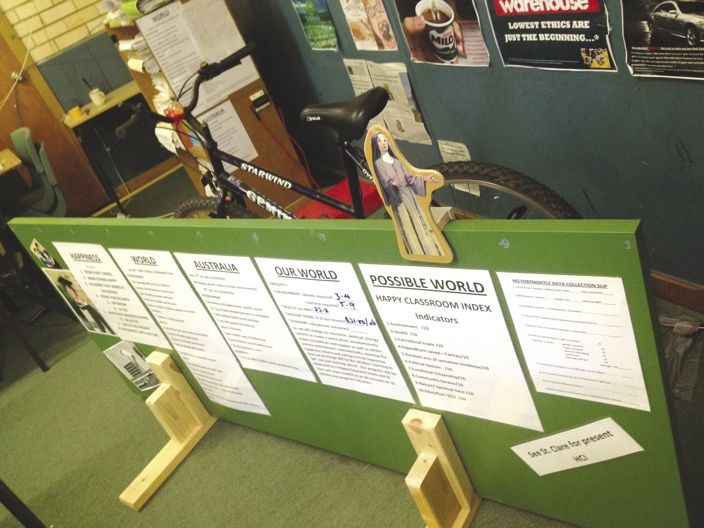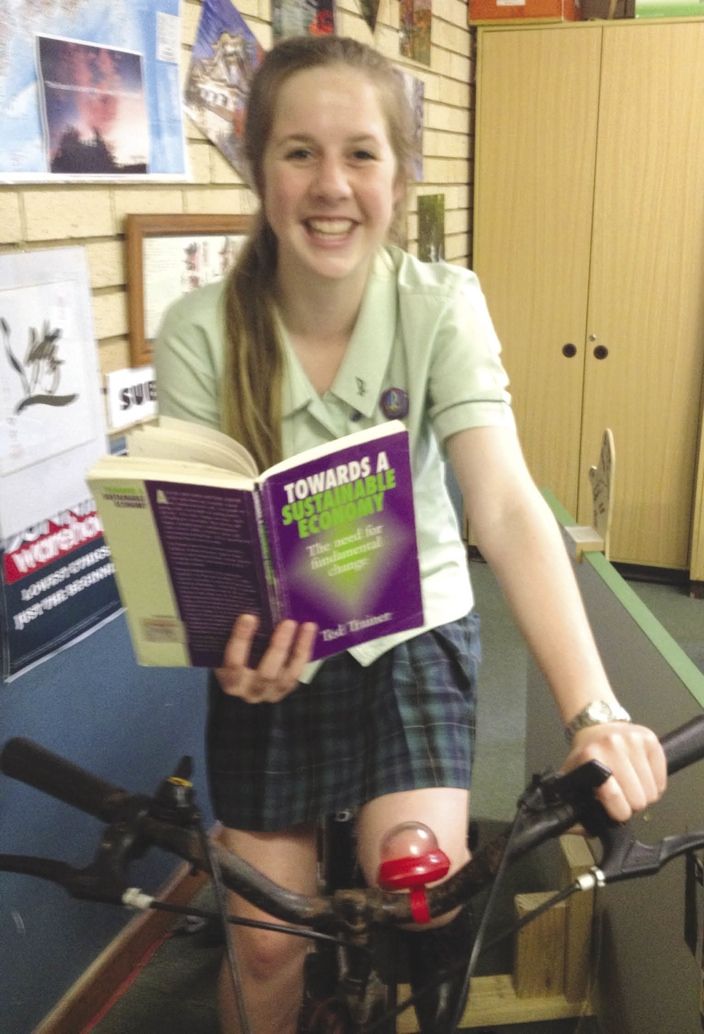We also built in ‘demand side’ reallocation. Many don’t realise every dollar spent is a vote for a particular economic system – fair or unfair. Based on Jeffrey Sach’s calculations that global poverty, environmental problems and disease could be dealt with by a reallocation of income equal to 2.4% of Advanced Nations’ Gross National Income (GNI), we surveyed our collective class income and then our expenditure on fair trade and ethical products each fortnight.
This expenditure, combined with our reallocated electricity savings, was calculated as a proportion of our class income. In all survey periods this was above the 2.4% of GNI required. We saved as we spent – not going without, but reallocating in such a way as to solve issues holistically.
Using participatory democracy, our judicial and political and monitoring systems were instituted. Each fortnight we assessed the extent to which our actions embodied gender equity, were inclusive both culturally and linguistically, whether opinions were accepted, whether students felt they had the right to speak without fear, whether they felt a sense of belonging and whether learning was relevant.
We imbedded ‘functional citizenship’ nudges and indicators and considered our Economics and Commerce and Japanese results and assessment tasks to be our economic ‘output. It was classified as Gross Learning Outcomes.
Finally, measurement was critical. Each of the systems, nudges and actions was scored, producing a result out of 10. The 10 indicators were weighted by the students’ values and combined to form an index number between 0 and 1.
Our number includes environmental, social, economic and political indicators – a synthesis of elements of the UNDP’s Human Development Index, the Measure of Economic Welfare, the Human Suffering Index, the Genuine Progress Index and others. Inspired by Nic Marks’ Happy Planet Index, we called our indicator the Happy Classroom Index (HCI).
In class we display the running index numbers from zero to one with a statue of St Clare. Her statue slides along the numbers depending on the extent to which we embody our ideal world. She started at 0.645 and now sits at 0.836. (Coincidentally the exercise also satisfied the 10 Genuine Happiness criteria contained in the behavioural economics literature.)
As students leave the room, a poster on the back of the door reads: ‘Beware, you are now entering the past!!!’










































































































































